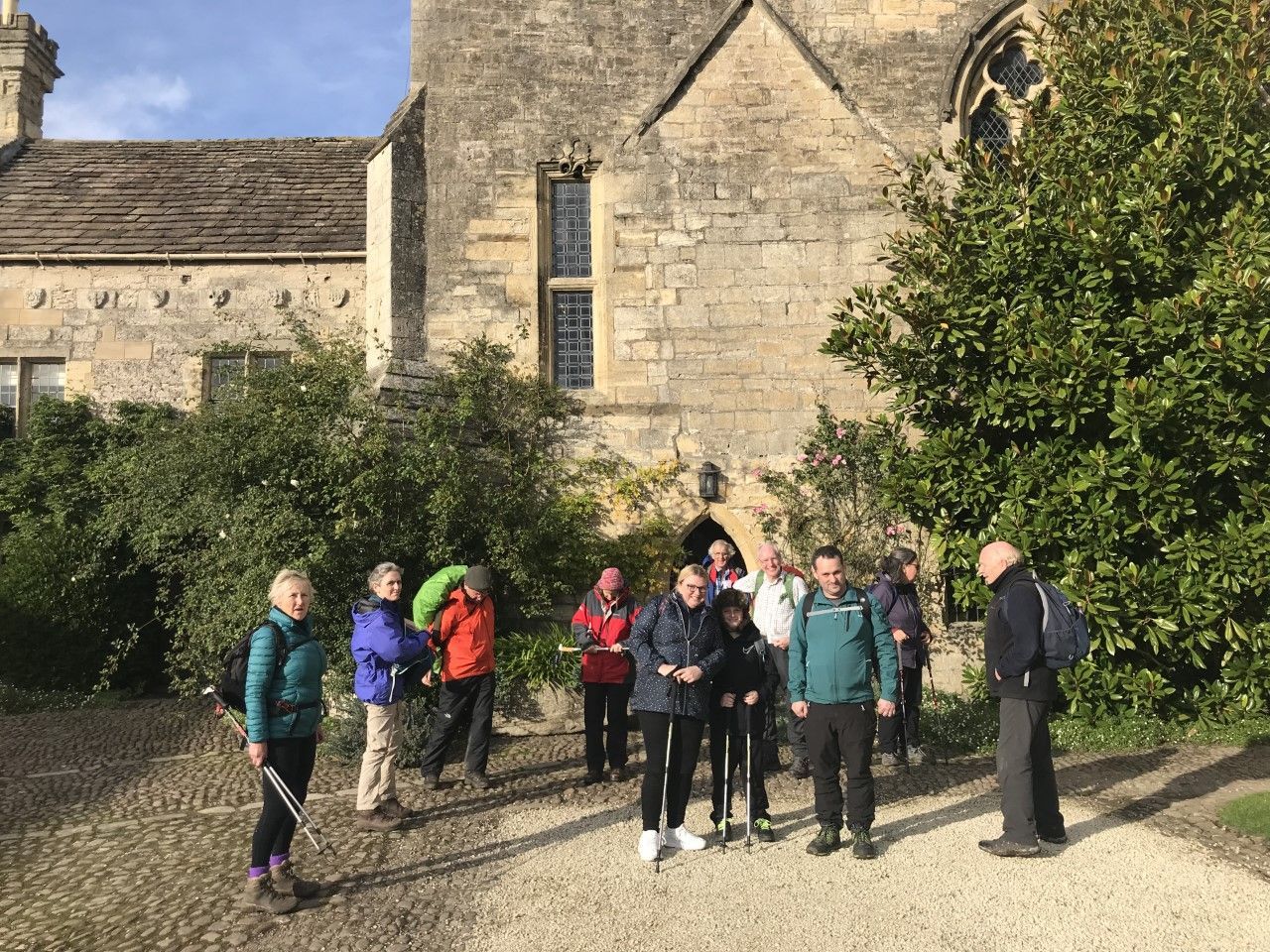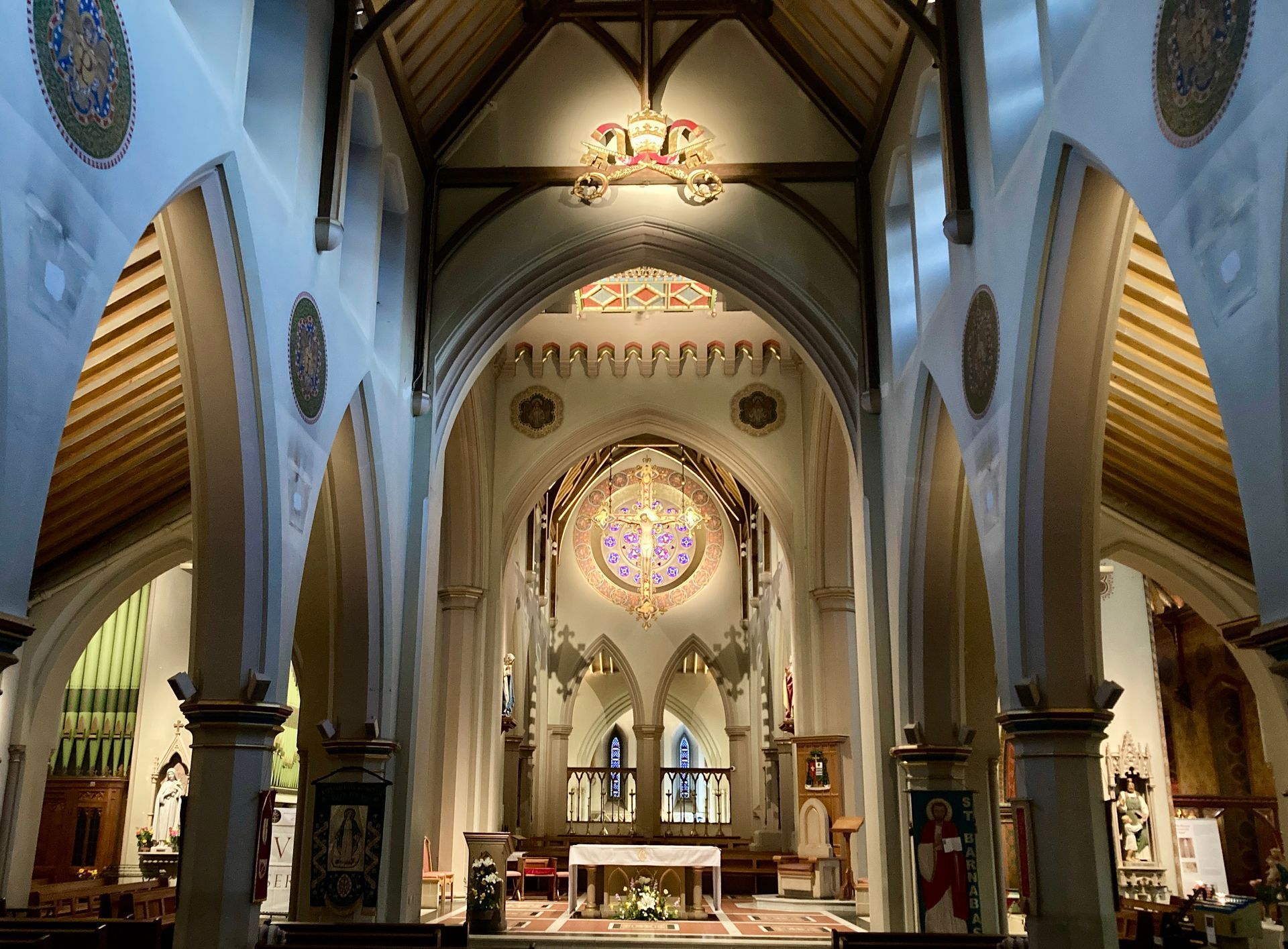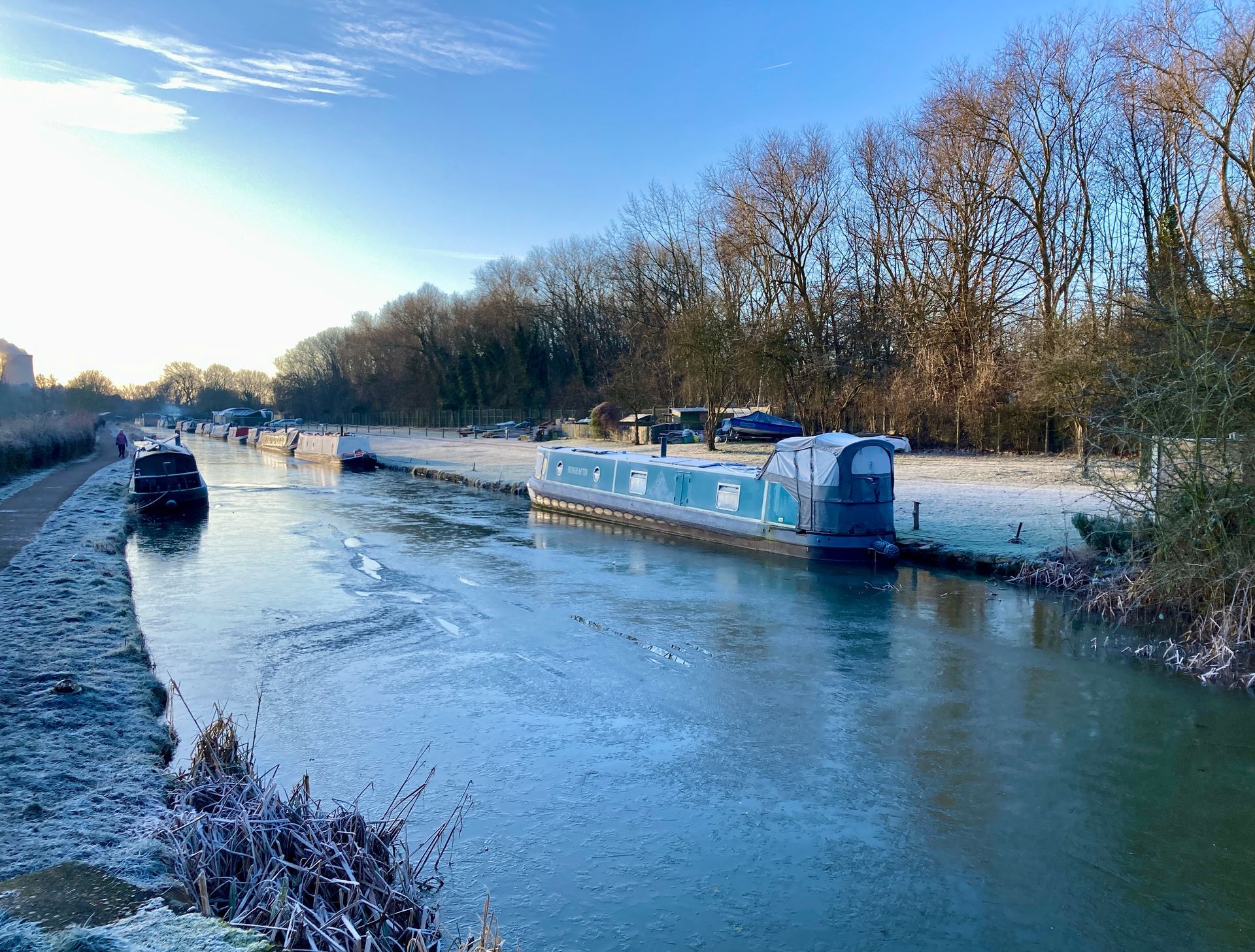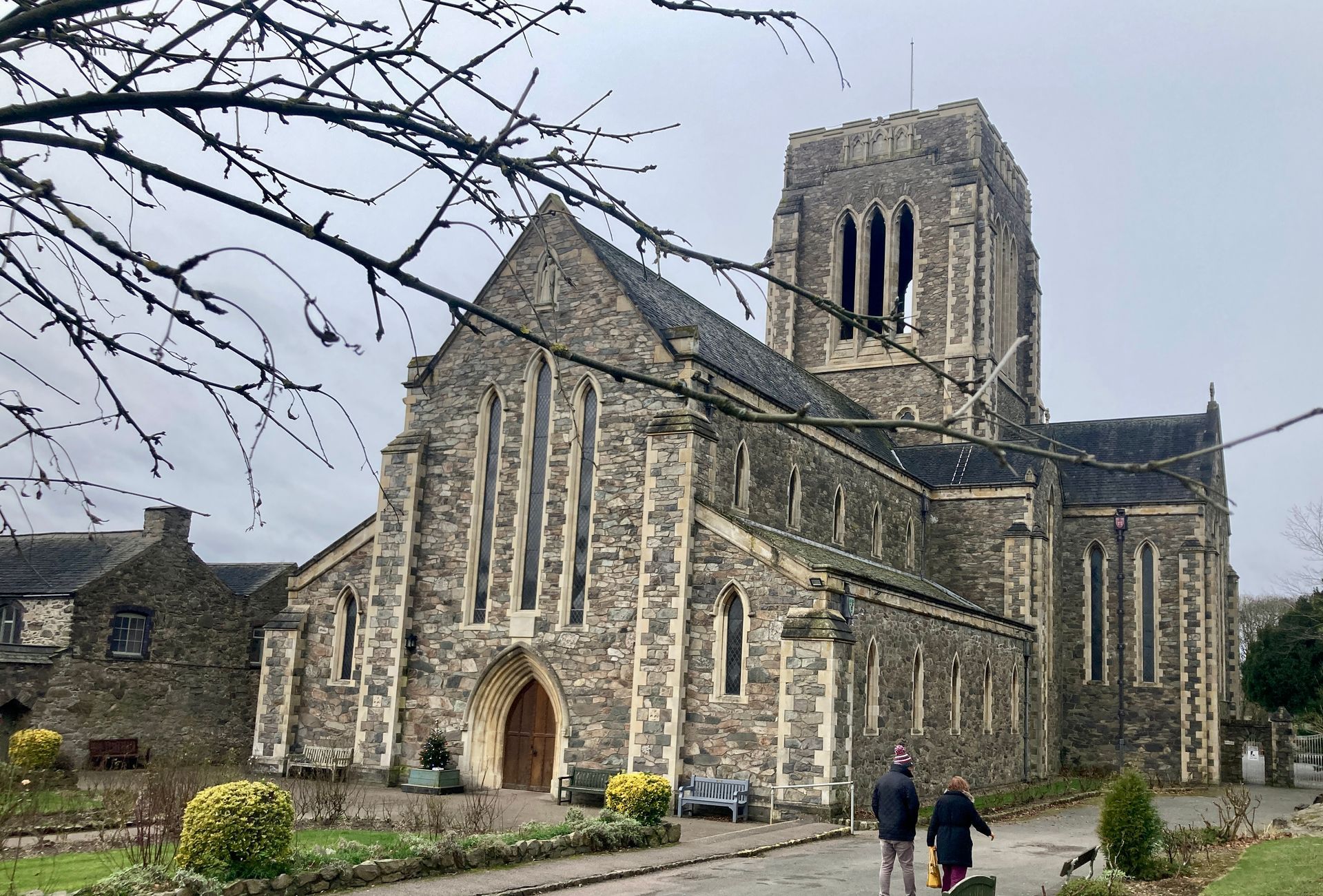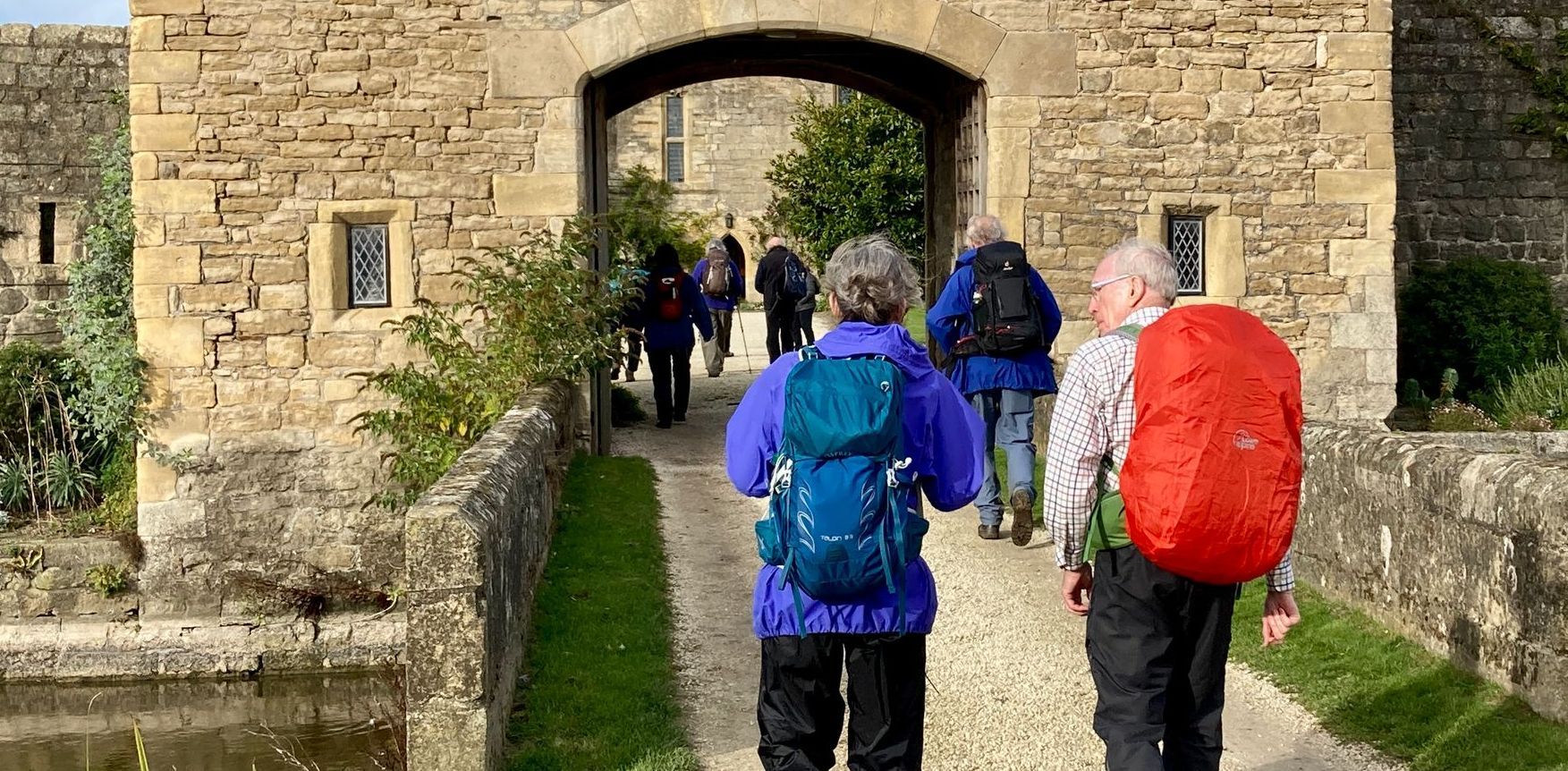The Way of Blessed Cyprian Tansi
A Pilgrim Way for the Diocese of Nottingham from the Cathedral of St Barnabas in Nottingham to the Shrine of Blessed Cyprian Tansi at Mount St Bernard Monastery near Coalville

The Shrine of Blessed Cyprian Tansi, Mount St Bernard Abbey
About the route
Cyprian Michael Iwene Tansi (1903–1964) was an Igbo Nigerian priest who became a monk of Mount St Bernard Monastery. He was beatified in 1998.
The Way takes a south-eastern direction through the city centre passing the site of Nottingham Castle to reach the Robin Hood Way which follows the Beeston Canal west and then southwest out of the city. The canal is crossed at a lock to follow the north side of the River Trent long the Trent Valley Way before diverting to the Church of St Francis of Assisi in Long Eaton. The Way returns to the Trent at Trentlock where the path crosses the Erewash Canal and continues west until the Trent is crossed beside a railway bridge.
The route then follows the Midshires Way south-east to reach and follow the River Soar to Kegworth and then Zouch where the River Soar is crossed. The Way passes through Hathern and crosses over the M1 Motorway to reach the Church of St Winefride in Shepshed. After leaving the town the route passes through farmland to reach Mount St Bernard Monastery and the Shrine of Blessed Cyprian Tansi. The Way is generally flat.
You can find out more about the Way and download the GPX file by clicking on the LEARN MORE tab in the
interactive map below
Guidance
Using the tabs in this section you can find the information you need for your pilgrimage.
The Outer Way provides practical advice about the route.
The Inner Way describes the spiritual highlights.
Using the button below you can download details of the inner and outer ways and the walking guidance and maps.
Stages: route, food & drink, accommodation and public transport
1. The Cathedral of St Barnabas, Nottingham to the Church of St Francis of Assisi, Long Eaton: 8.9 miles
The route is mostly along wide canal and riverside paths. The Cathedral can be reached by foot or bus from the train and coach stations. There are plenty of pubs, cafés, restaurants and accommodation of all types in central Nottingham. There is a café shortly after the Way reaches the River Trent and another on the outskirts of Long Eaton. There are more shops, cafés and pubs in the centre of Long Eaton. There may be Airbnb accommodation in Long Eaton. There are buses from Long Eaton back to central Nottingham.
2. The Church of St Francis, Long Eaton to Kegworth: 6 miles
The route is beside the canal and river at first, then on paths and lanes across quiet countryside. There are pubs and a tearoom at Trentlock, and a café at Sawley Marina. There are shops, pubs and cafés in Kegworth. There may be Airbnb accommodation in Kegworth. There are buses back to central Nottingham from Kegworth church.
3. Kegworth to the Church of St Winefride, Shepshed: 8.1 miles
The route follows the River Soar to Zouch, then across farmland by track and lane. There is a pub at Zouch and shops, pubs and cafés in Shepshed. There may be Airbnb accommodation in Shepshed. There are buses to Loughborough railway station from Shepshed.
4. The Church of St Winefride, Shepshed, to Mount St Bernard Abbey, Coalville: 2.9 miles
The route is across fields and through woodland. There is a pub near the path on Ashby Rd W. St Joseph’s tearoom is about 0.5 miles to the east of the Monastery on Oaks Rd. There is a guest house at the Monastery. The Monastery is not well served by public transport but there are buses from Tressall Rd (2.5 miles away) and from Oakham Drive (2.3 miles away).
Public transport links
Trains:
https://www.nationalrail.co.uk/
Coaches:
https://www.nationalexpress.com/en
Buses:
https://www.nottinghamshire.gov.uk/transport/public-transport/find-bus-timetables
Pilgrim people and places
NB Many churches are closed during daylight hours. If you would like to visit the churches and shrines it is best to check the parish website first. You can also email or phone the parish office to see is someone would be willing to open the church. Please be aware that many priests cover more than one church and so may live many miles away.
The Cathedral of St Barnabas, Nottingham
In 1825 the congregation of the Nottingham Catholic mission numbered about 150. Three years later the Church of St John the Evangelist in George Street was opened. This building survives today in secular use. As the Catholic population grew a larger church was needed, and in 1841 a site on Derby Road was acquired. AWN Pugin was appointed architect and in November 1842 the foundation stone of St Barnabas’ Church was laid by Bishop Wiseman. The building, which is in the Early English Gothic style, was largely funded by Pugin’s patron Lord Shrewsbury. At the time it was the largest Catholic church built in England since the Reformation. With the restoration of the Catholic hierarchy in 1850 St Barnabas’ became the cathedral church of the new Diocese of Nottingham, and the first Bishop, Joseph Hendren, was enthroned in December 1851. The original interior design was of rich colour. This has undergone several transformations, but the most recent, in 1993, sought to reinstate some of Pugin’s original concept.
The Church of St Francis of Assisi, Long Eaton
In 1884 the Rev Elkins of St Barnabas Cathedral was given charge of a new mission in Long Eaton. A site was acquired in Sawley Road (now Tamworth Road) and an iron church seating 76 was built at a cost of £130. A presbytery was built in 1923, and in June 1929 the foundation stone was laid for the present red brick church, which was completed in 1930. A baldacchino over the high altar was built by two unemployed parishioners. In 1973-4 a narthex was built at the west end of the church and in 1995 the interior was re-ordered with a curved sanctuary dais, a font with a sunken pool and good quality artworks.
The Church of St Winefride, Shepshed
The first Catholic church in Shepshed was built in 1842 in Belton Street, designed by AWN Pugin. This building survives, converted to residential use. By the end of the C19 this was too small for the congregation. In 1892 a large house was purchased for use as a presbytery and in 1899 an adjacent field was bought. St Winefride’s was opened in 1928. It is a late Gothic Revival church, well-designed with a high standard of finish. The parish includes the communities of Hathern and Belton.
The Monastery of Mount St Bernard, Coalville
Mount St Bernard Abbey is a Cistercian (Trappist) monastery founded in 1835. The Cistercian order dates to the C12. Trappist communities are dedicated to strict observance of the Cistercian rule and date to the mid C17. Following the suppression of monasteries in France, a small colony of dispossessed Trappist monks arrived in London in 1794, with the intention of moving on to found a monastery in Canada. Thomas Weld, a Catholic recusant and philanthropist, provided them with land on his estate at East Lulworth. The monks remained at Lulworth until 1817, when following the Bourbon Restoration they returned to France to re-establish the ancient Melleray Abbey in Brittany. Following the 1830 July Revolution the monks were again persecuted and left to found Mount Melleray Abbey in Ireland (1833). From here a small community of monks was sent to found Mount St Bernard in 1835. The Abbey was the first permanent monastery founded in England since the Reformation.
The monks live a contemplative life of work, prayer, radical discipleship and fidelity to the Gospel. Mount St Bernard is the only Trappist house in England and the monks brew the only Trappist beer in Britain.
ABOUT THE DIOCESE OF NOTTINGHAM
The Diocese of Nottingham is part of the province of Westminster. It was founded at the re-establishment of the Catholic hierarchy of England & Wales in 1850. The Diocese covers an area of 13,074 square kilometres (5,048 sq mi), taking in the English counties of Nottinghamshire (now excluding the district of Bassetlaw), Leicestershire, most of Derbyshire, Rutland and Lincolnshire. The episcopal seat is the Cathedral Church of St Barnabas in Nottingham.
The Diocese wants to help its people to become disciples and to equip them to share the love and message of Christ with others. Through offering support, the Diocese enables its people and communities to grow, to become missionary, and to thrive. The Diocese is working towards all of its churches becoming outward-looking.
